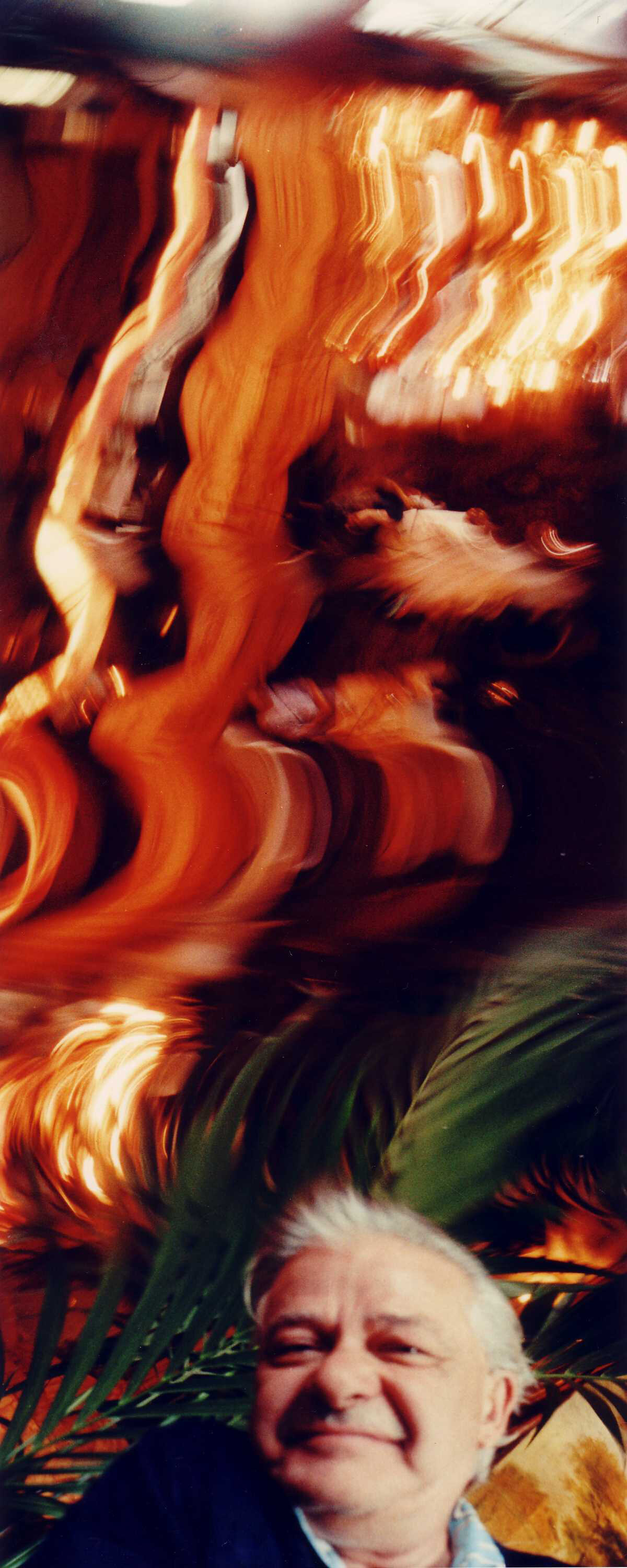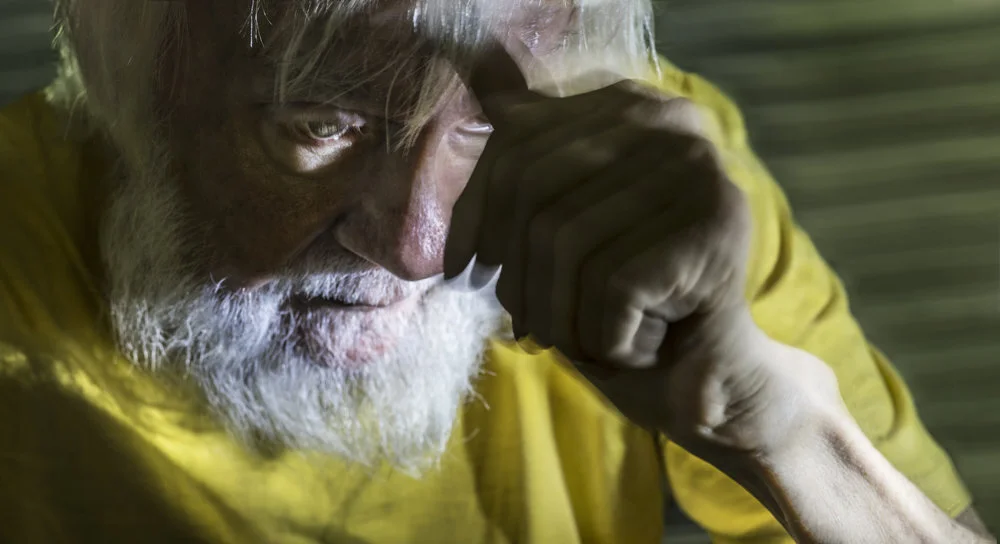From Our Archives: John Chamberlain: The Craft of Mess
John Chamberlain, Untitled, 1989.
All images © 2019 Fairweather & Fairweather LTD / Artists Rights Society (ARS), New York. Courtesy the John Chamberlain Estate and Hauser & Wirth.
John Chamberlain, Paris Rue, 1989.
This article was featured in Issue no. 23 - Choices
Chamberlain is quoted as having a slap-dash, unabashedly voyeuristic relationship with his camera. He carried it almost everywhere he went, and did not utilize it conventionally, but instead treated it almost as if it was a physical extension of his wandering eye.
“It’s not a camera with a hole, it’s a camera with a slot. I treat it like it was graffiti. I hold the camera so that it’s like a paint bomb or something. I never look through the hole where it says you look through. I’m always amazed that there are some good pictures.”*5
John Chamberlain, Unitled, 2002.
The end result of Chamberlain’s photographic process is an amorphic cadence of textures that presents a two dimensional adaptation of the artists more distinct metal sculptures. He was a man who embraced laziness, impulse, and the craft of mess, and his photographs do evoke a kind of addled, joyful bewilderment. The images remind one of the view out of the window of a speeding car, or perhaps of the way the world looks from a spinning playground roundabout, or even the streetview a person finds himself surrounded by when he stumbles out of a bar. Trailing beams of light from street lamps and traffic meld and mesh with elongated, rushed shapes, rendered unrecognizable by motion. Light and form are conglomerated and interchanged. The crushed and crumpled automobile Chamberlain is known for morphs into an electric, urgent, masquerade of velocity and ambulatory color.
John Chamberlain, Untitled, 2001.
After serving in the navy during World War II, Chamberlain enrolled at The Art Institute of Chicago in 1951. It appears that this was where he discovered his passion for art, finding himself spellbound by the dappled emotional renderings of Vincent Van Gogh and the chaotic, biomorphic planes of Willem de Kooning. Inklings of both legendary painters can be observed in the distinct body of work that would later come to be associated with John Chamberlain and his bountiful career. After a year and a half, the young Chamberlain felt restless in Chicago and made his way to Black Mountain College in North Carolina. Here he found refuge and friendship with poets Charles Olson, Robert Creeley, and Robert Duncan. This group of writers undoubtedly had an effect on Chamberlain and his creative scope. Known as the Black Mountain School, poets like Creeley and Olson are considered members of the postmodern projectivist movement. Projectivism, which is interconnected to the Beat Generation’s affinity for the unconventional and the underground, is a mode of philosophy that attributes qualities to an object that might not otherwise belong to it.
John Chamberlain had deep respect for poetry, and his time with projectivist thinking surely made a lasting impression on him. His counterparts Charles Olson and Robert Creeley are known for concise, evocative, free verse poems that operate on the compression of emotion and the notion of projective verse.*6 Creeley described the kind of poetry he wrote and the kind of paintings counterparts like Pollock and de Kooning made as, "like going into a spin in a car.” The way Chamberlain made sculpture and photography was like how Creeley made poems.“If I have a room full of parts, they are like a lot of words. I have to take one piece and put it next to another and find out if it really fits. The poet’s influence is in there.”
Read the rest of the article in Musée Magazine's Issue no. 23 - Choices
John Chamberlain, Unitled, 2001.











